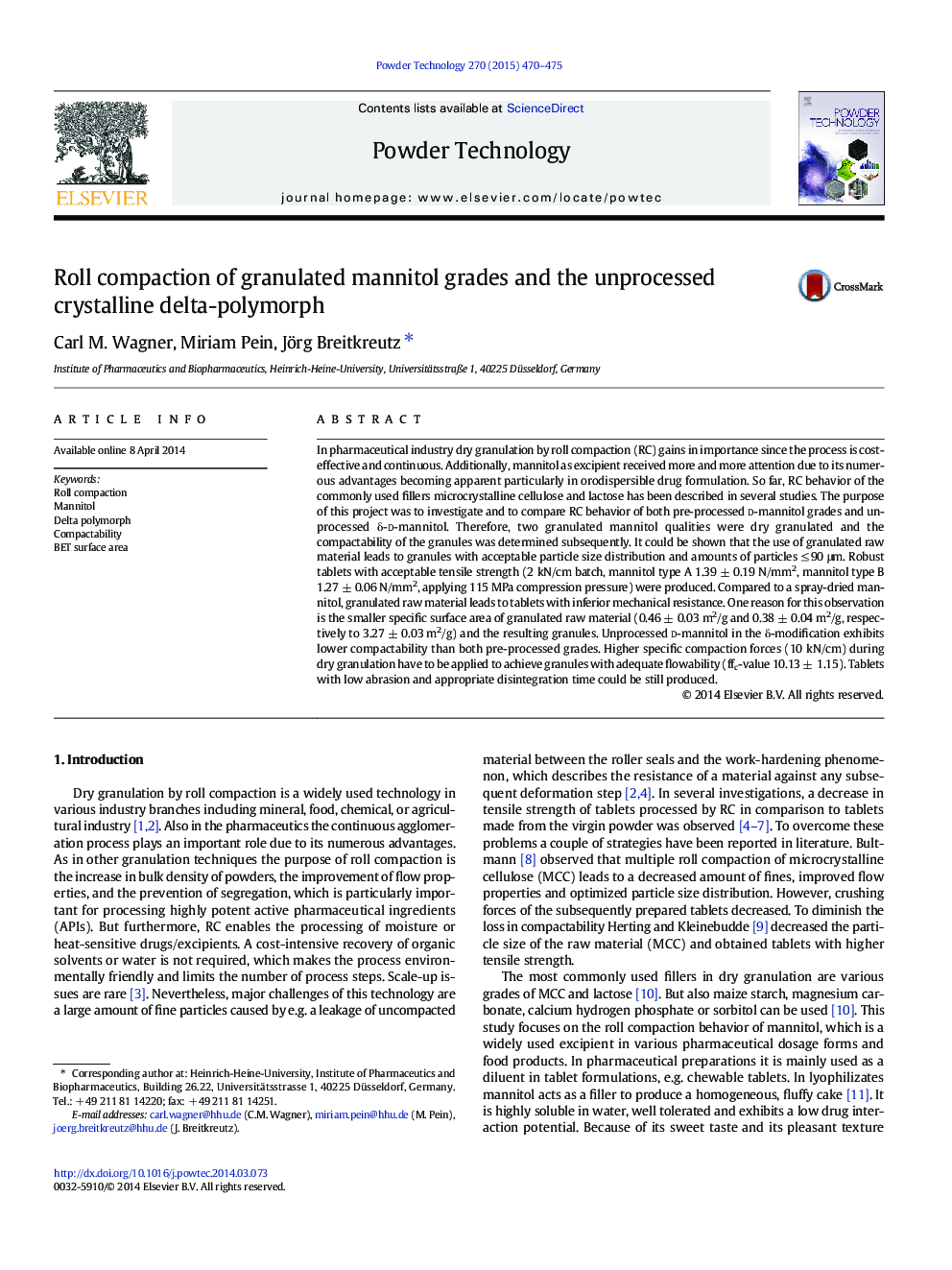| Article ID | Journal | Published Year | Pages | File Type |
|---|---|---|---|---|
| 235908 | Powder Technology | 2015 | 6 Pages |
In pharmaceutical industry dry granulation by roll compaction (RC) gains in importance since the process is cost-effective and continuous. Additionally, mannitol as excipient received more and more attention due to its numerous advantages becoming apparent particularly in orodispersible drug formulation. So far, RC behavior of the commonly used fillers microcrystalline cellulose and lactose has been described in several studies. The purpose of this project was to investigate and to compare RC behavior of both pre-processed d-mannitol grades and unprocessed δ-d-mannitol. Therefore, two granulated mannitol qualities were dry granulated and the compactability of the granules was determined subsequently. It could be shown that the use of granulated raw material leads to granules with acceptable particle size distribution and amounts of particles ≤ 90 μm. Robust tablets with acceptable tensile strength (2 kN/cm batch, mannitol type A 1.39 ± 0.19 N/mm2, mannitol type B 1.27 ± 0.06 N/mm2, applying 115 MPa compression pressure) were produced. Compared to a spray-dried mannitol, granulated raw material leads to tablets with inferior mechanical resistance. One reason for this observation is the smaller specific surface area of granulated raw material (0.46 ± 0.03 m2/g and 0.38 ± 0.04 m2/g, respectively to 3.27 ± 0.03 m2/g) and the resulting granules. Unprocessed d-mannitol in the δ-modification exhibits lower compactability than both pre-processed grades. Higher specific compaction forces (10 kN/cm) during dry granulation have to be applied to achieve granules with adequate flowability (ffc-value 10.13 ± 1.15). Tablets with low abrasion and appropriate disintegration time could be still produced.
Graphical abstractFigure optionsDownload full-size imageDownload as PowerPoint slide
